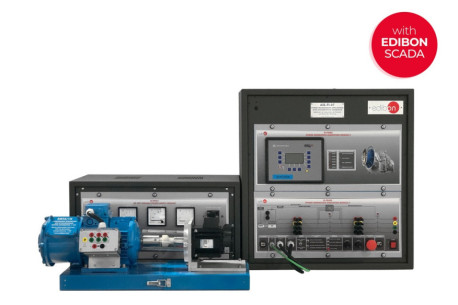For decades, the traditional energy model has relied on large, centralized power plants that generate electricity and distribute it through extensive grids to end users. While this model has proven effective, it now faces major challenges: the need to integrate intermittent renewable energy...
L’électrification de la société et le développement constant des énergies renouvelables transforment en profondeur le paysage énergétique mondial. Cette transition vers des sources d’énergie propres et durables soulève un défi majeur : comment stocker efficacement, de manière sûre et durable,...
Chez EDIBON, nous réaffirmons notre engagement en faveur du progrès des énergies propres et renouvelables, avec un accent particulier sur l'hydrogène vert en tant que moteur clé pour un avenir plus durable. Nous sommes fiers d'avoir été choisis pour équiper le premier laboratoire d'hydrogène vert...
La transition vers les véhicules électriques (VE) a pris une ampleur considérable à travers le monde, promettant une réduction des émissions de gaz à effet de serre et un chemin vers un avenir plus durable. Cependant, alors que la demande pour les VE s'accélère, le besoin de grandes quantités de...
Chez EDIBON, nous sommes engagés à renforcer les compétences comme pilier stratégique pour la compétitivité et le bien-être social de l'Union européenne. Une formation adéquate renforce non seulement l'économie, mais permet également aux individus de participer pleinement à la société et à la...
We are pleased to announce that EDIBON has installed new equipment in the Department of Electrical and Communications Engineering (PNGUOT) in Papua New Guinea! Through this collaboration, students and faculty now have access to the advanced AEL-MPSS and AEL-MPSS-01C units.
We just completed the installation of a Modular Electrical and Smart Grid Power Systems, AEL-MPSS, in Azərenerji ASC, the largest electric power company in Azerbaijan and the Caucasus. We wish you to continue expanding your facilities and exploring new fields related to energy, aligned with your...
With the new smart bidirectional meters, all protection and control devices and the wide use of Internet, the grid has become an intelligent (smart) grid.
The growing concern over pollution and climate change has exponentially increased the interest about clean energies. Computer Controlled Renewable Energies units (with SCADA), designed by EDIBON, are not only an effective learning tool to understand all energy related processes, but also a...
 Préférences sur les cookies
Préférences sur les cookies


































